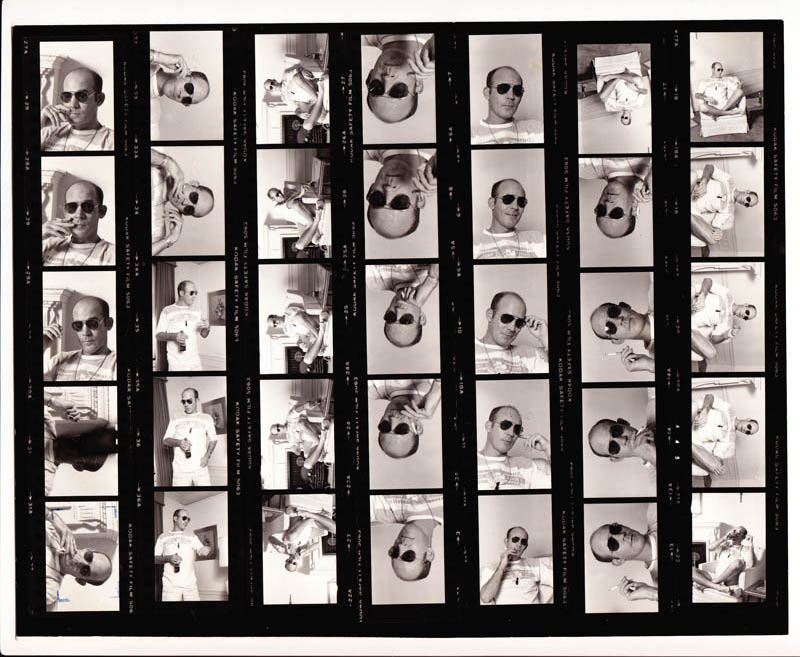 | |||
 | |||

|
Hunter S. Thompson as photographed by Allen Arpadi, 1979, New York City. This iconic shot of Hunter S. Thompson, with his trademark aviator shades and cigarette holder, was taken by a friend of mine, Allen Arpadi, in 1979 in New York City. 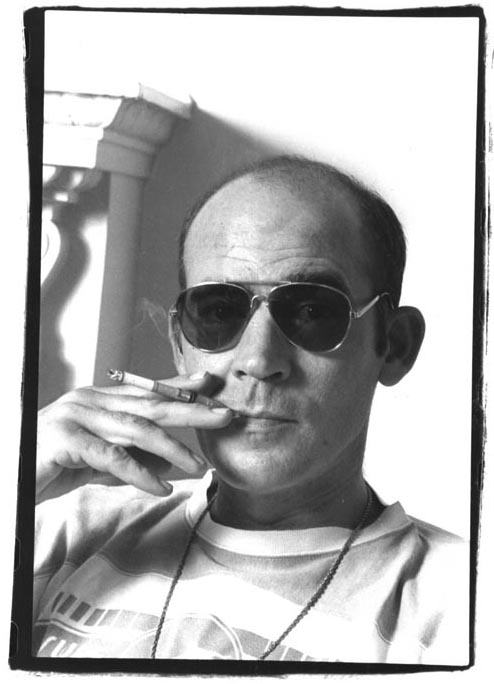
(All photos of Hunter S. Thompson taken by Allen Arpadi on this website are copyright 1979 by Allen Arpadi. All Rights Reserved.) Of all the countless photos of the late Hunter Thompson (1937-2005) available, the editors of Rolling Stone must have thought this photo captured legendary writer best to put on their collection of his writings. For this reason, I asked Allen if I could show the proof sheets of his session on PopSpots, to let readers see of how an iconic shot comes about: being in the right place at the right time and approaching the subject from different angles until everything fits just right.
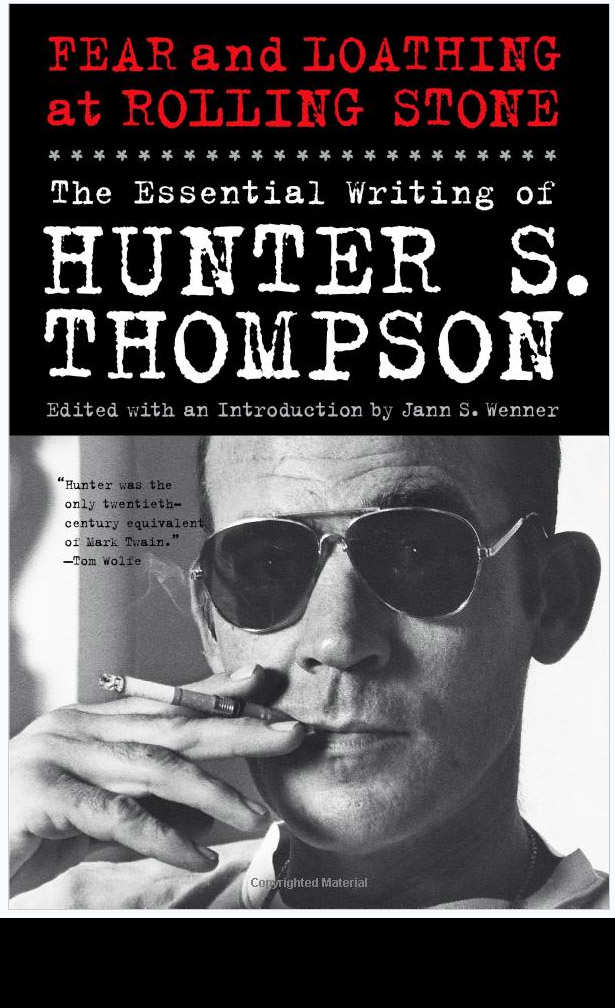
The official title of the book is: Fear and Loathing at Rolling Stone: The Essential Writing of Hunter S. Thompson, edited with an introduction by Jann S. Wenner (Simon & Schuster; hardcover: Oct. 25, 2011; paperback: Oct 16, 2012). Here's a picture of the book on the shelves at Shakespeare & Co. NYC. This is Allen Arpadi, a photography professor, in 2012. 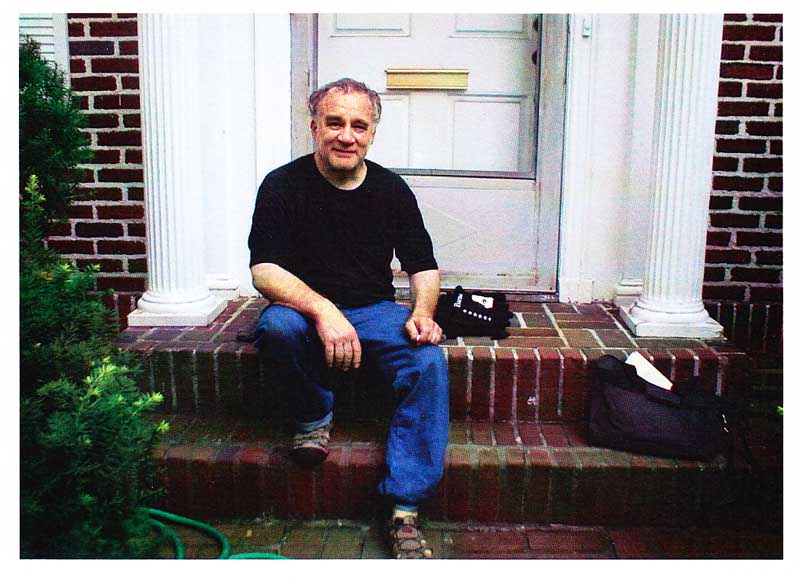
Here's Allen in 1977, the year he took the picture. 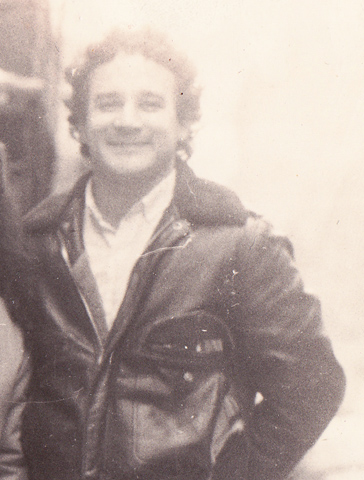
When I first moved to New York City in 1977, I crashed at Al's loft at 450 Broome Street at Mercer for several months. His primary job then was taking photographs of 10 pound canned hams and 10 pound cheese blocks, so needless to say, we ate ham and cheese for breakfast, lunch, and dinner. My favorite photo of Al's is this one he took in the late afternoon of two painters painting a cast-iron building on the northeast corner of Broome Street and Broadway, a block away. The building was famous for having the first successful passenger elevator in a commercial building (also in 1857, powered by a steam engine in the basement.) Cast Iron by Allen Arpadi (1979). Site of the photo: The E. V. Haughwout Building (1857), northeast corner of Broadway and Broome Street, New York 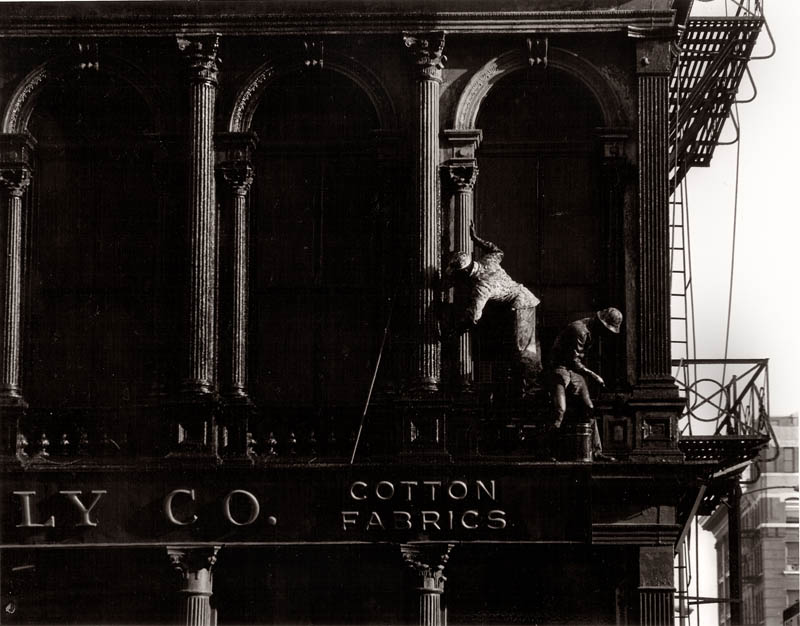
(Copyright 1979 by Allen Arpadi. All Rights Reserved.) Here's what that building looks like today. (The northeast corner of Broadway and Broome Street, New York). Al took the photograph of Hunter Thompson for an article for the Soho News (1973-1982), now in tabloid heaven. Here's what a typical copy looked like. Al used me as a model for an article the Soho News did on whether computer screens hurt your eyes. Which tells you how long ago that was. When Al was assigned to photograph Hunter, the writer was staying in the French-Gothic Sherry-Netherland Hotel at 59th street and 5th Avenue. 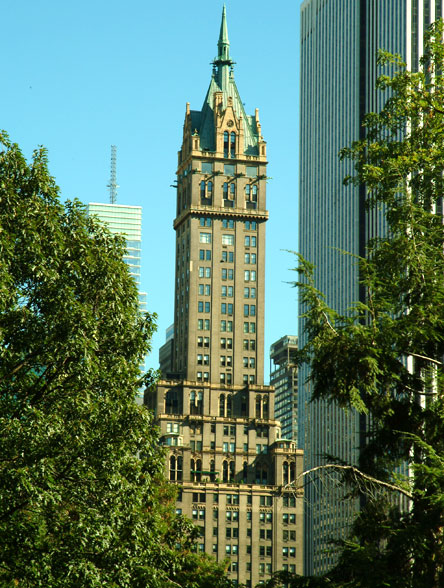
Here's one of the shots from the session. 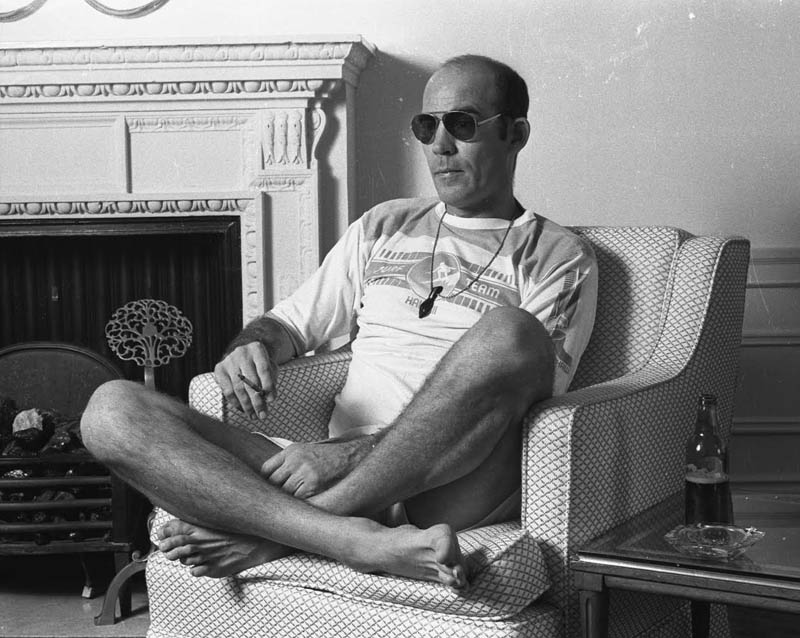
In looking for a nice shot of the hotel, I ran across some pictures of some of the hotel rooms and thought to myself, "Hummm? I wonder if I could match up that mantle in the photo with one from the room? And sure enough, I found the exact shaped mantle (actually I had to flip it horizontally to fit.) So now, by mixing the old with the new, you can get more of a feeling for the real look of the suite where the photo session took place. 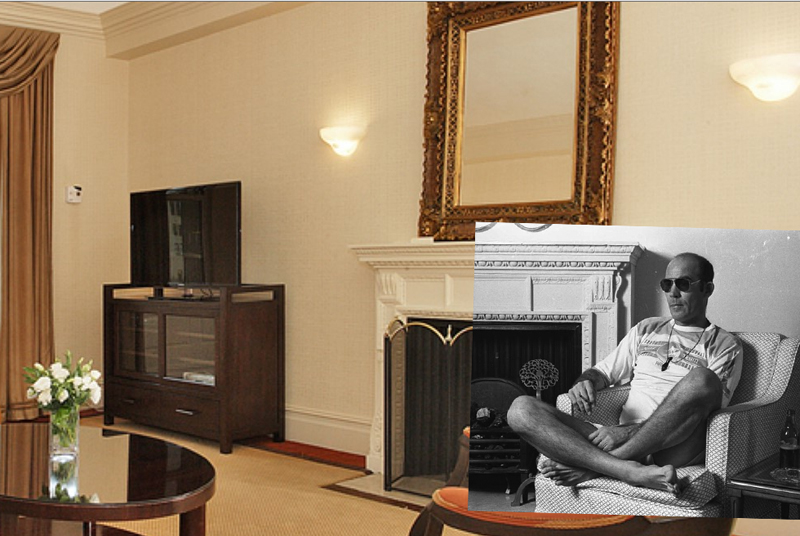
I recently interviewed Allen about the session. As we look through the proof sheets I will let Allen explain what's going on himself. His words are in italics. Allen Arpadi: The interview was for the Soho News. It was put together approximately a week or two in advance. I was assigned to take a photo to accompany Jane Perlez's article. It was a book tour. Thompson was coming out with a new book, The Great Shark Hunt. I went with a copy of Fear and Loathing which I had just read. My cousin wanted me to get it autographed. Jane said it would be ok to ask for the autograph, which I did. He didn't speak to me, really, otherwise, except, "hello." If you Google "jane perlez hunter thompson" the first result should be the following article from Google Books. This is an excerpt adding some detail as to the time, date, and discussion topics of the interview that Al photographed. 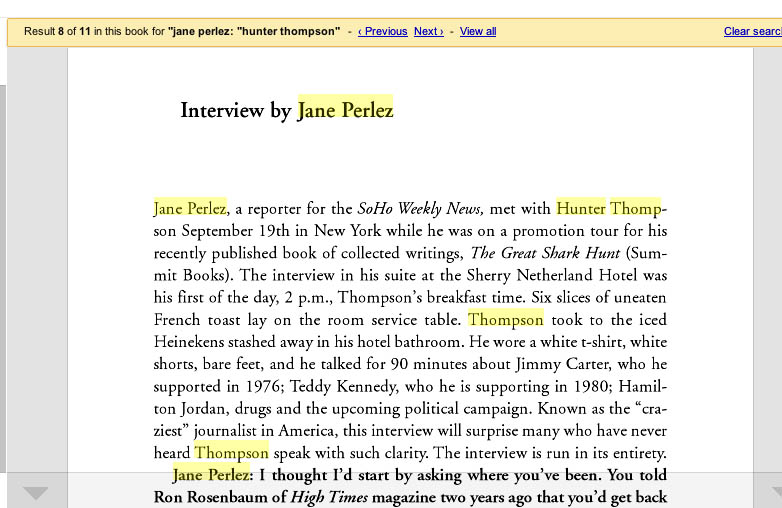
Jane Perlez now writes for the New York Times. Here's a recent byline... 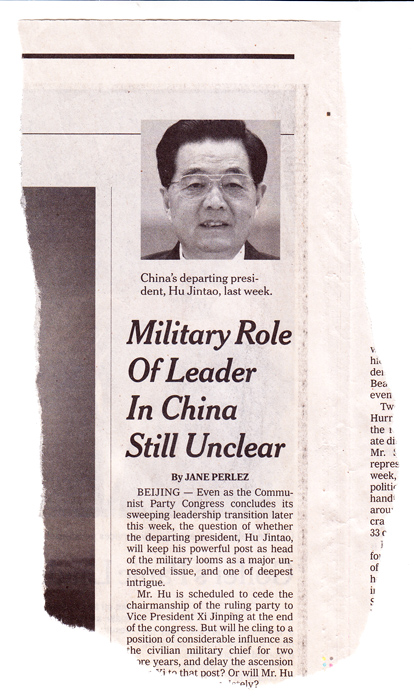
Allen Arpadi: As a photojournalist, as a matter of practice you have about 10 minutes while the interviewer is interviewing. The reporter may be there for an hour. The idea is to do an overview - subject in the environment; then a medium close-up (both horizontal and vertical) ; then a close-up (both horizontal and vertical). It's so the editor, not knowing where the photo is going, has choices to match photos based on the space allowed for the photographs. I learned from Kit Luce, a photographer who was the grandson of Clair Booth Luce [a journalist whose husband owned Time and Life]. He gave me a first-hand background in photojournalism. This is what they teach you at Life magazine. Proof sheet #1 The proof sheet is in somewhat random order. The first shot Al took is a close-up of Hunter. It's in the top middle. As we proceed, you will see all the photos in order, larger. The reason this is only a half a roll is because the first photos on the roll were of another subject that Al had taken previously. As Al explained, if he had stated with a fresh roll, that would have been the price of half a roll of film out the window. They weren't on a New York Times budget. 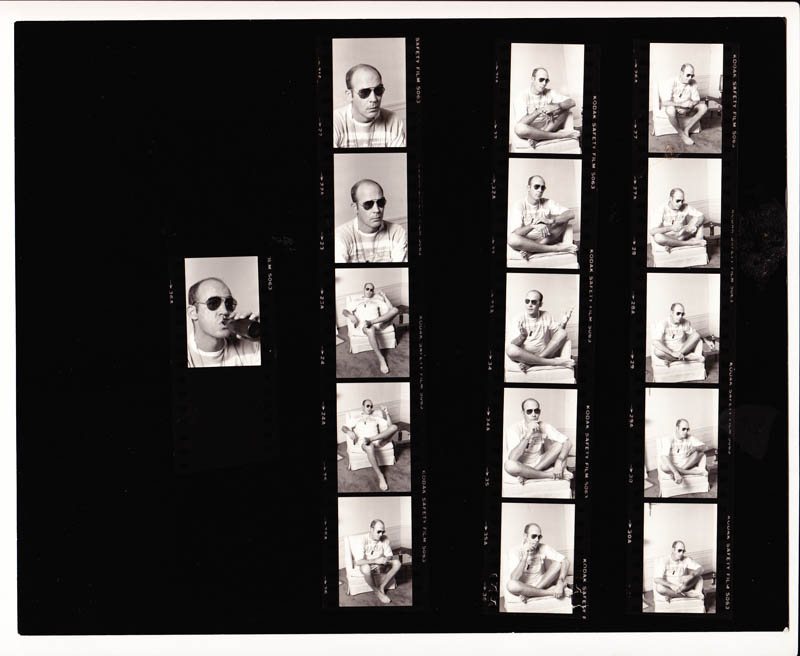
Proof sheet #2 This was the second, and last proof sheet. The dark "blotch" in the bottom left hand corner came in the developing the film. The image could not be saved.
Allen Arpadi: So we knock on the door. The door opens and there's Hunter. In shorts, raggedy looking. He had just woken up. From his point of view, it was like nine in the morning, Colorado time. When he opened the door he immediately asked if I had any reefer. And I said, "no." He was scarfing down beer and chain smoking the whole time I was there. (Individual shots in order - Proof sheet 1 - frames 22-26 (another photo shoot took up #1-21)) For his first shot, Allen started with a headshot. Al had set up a flash/umbrella-stand off to the left, which was his primary source of light. 
(Proof sheet 1 - frames 27-31) 
Allen Arpadi: I've always had trouble photographing athletes. They are so fast with the movements. You have to really grab them. They don't pause. They are on super-speed. Hunter Thompson was like that. He was very fast. I think he was overtly camera-shy. He purposely turned away from the camera. He would go out of his way to make himself look awkward, uncomfortable. He had all the props. He was hiding behind the sunglasses and the cigarette. It means you are shut off. And if you look at the pictures, he's cross legged. All angles and stuff. In the end, you don't see a comfortable guy. He's full of tension. (Proof sheet 1 - frames 32-36) 
(Proof sheet 1 - frame 37) 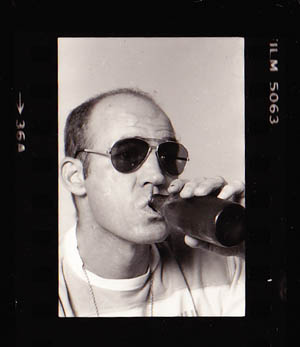
(Proof sheet 2 - frames 1-7) This is where Allen took a moment to put in a new canister of TRI-X PAN (400) film. 
Allen Arpadi: It took a lot of effort to take the pictures. Jane was behind me. She was interviewing as I took the photos. He didn't really stop for me, per se. I had to stay low so I didn't interfere with Jane. So most of the camera angles were low. I remember going to the left side and then to the right side and then, after about ten minutes, he said, "O.K., you can leave now." Yes, he set the scene. As you can see, I only shot a roll and a half. That was pretty quick. For lighting, I used one umbrella. I think I used two lenses. I took his head shot with a 105 millimeter portrait lens and I used a semi-wide 35 millimeter lens for him in the chair. (Proof sheet 2 - frames 8-12) 
(Proof sheet 2 - frames 13-15) 
(Proof sheet 2 - frames 16-17) 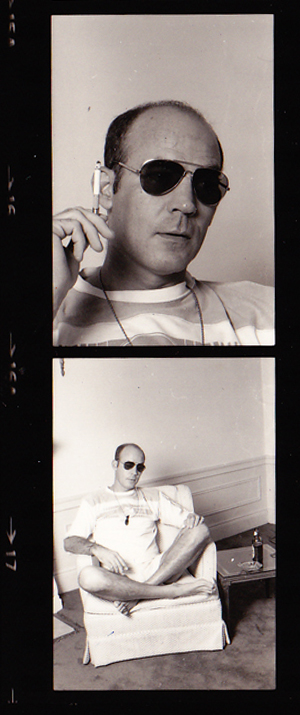
(Proof sheet 2 - frame 18) 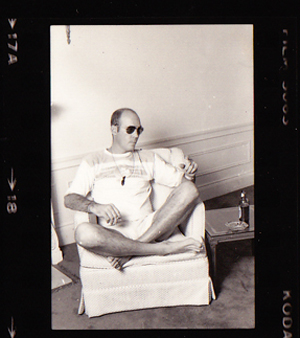
(Proof sheet 2 - frames 19-21) 
(Proof sheet 2 - frame 22) 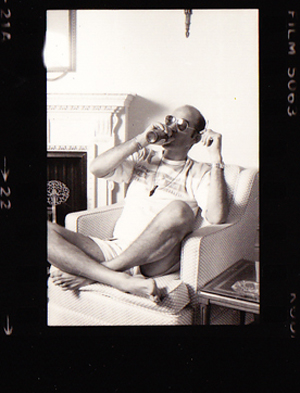
(Proof sheet 2 - frame 23) 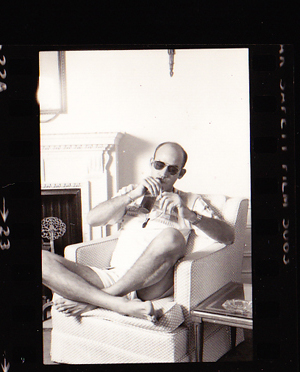
(Proof sheet 2 - frame 24-26) 
(Proof sheet 2 - frame 27) 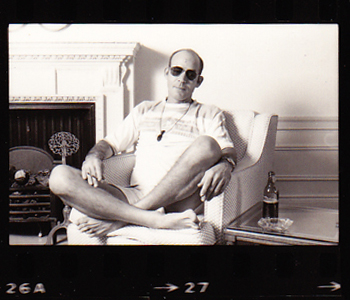
Allen Arpadi: When I took the photograph that wound up on the cover of the Rolling Stone book (The Essential Writings of Hunter S. Thompson), he wasn't posing for me. It just came up. As I took it, I specifically recognized that it was just like a Garry Trudeau cartoon picture of Thompson. I recognized the sunglasses, and the cigarette holder and the position of his hands - it was just like the cartoons. My picture came after the iconic drawing of him. I didn't set it up. He just does that and I happened to take the same photograph. (Proof sheet 2 - frames 28-30) The book cover shot is the second one down, #29, below. 
Allen Arpadi: Later, on the proof sheet, I screwed-up the development of a picture near to it (frame 31). I have always been curious to know what was on that image. If that was a better one. It's horizontal. The good one was vertical. (Proof sheet 2 - frames 31-32) 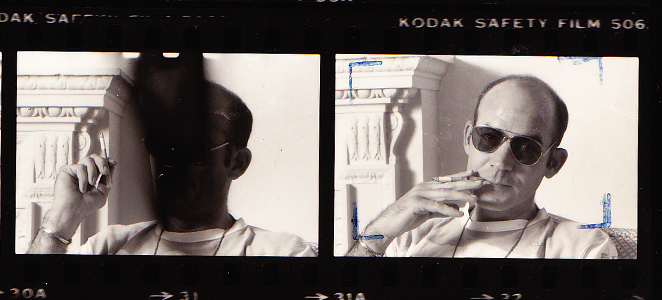
(Proof sheet 2 - frames 33-34) 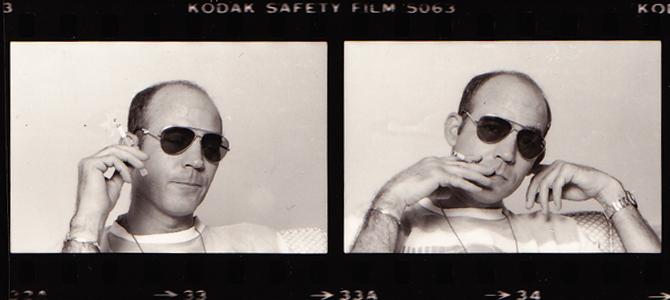
(Proof sheet 2 - frames 35-36a) 
This was the end of the photo-session. When Al saw Hunter posing as he is in the left shot, he immediately thought of the way a Hunter Thompson-like character ("Uncle Duke") had been captured by the Doonesbury illustrator, Garry Trudeau. 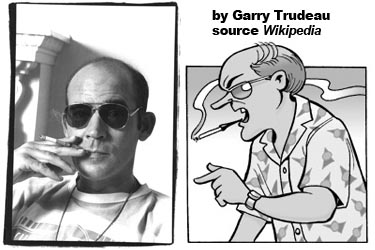
(credit: "Uncle Duke" illustration, right, by Garry Trudeau.) Here's a PopSpot of just the iconic photo. 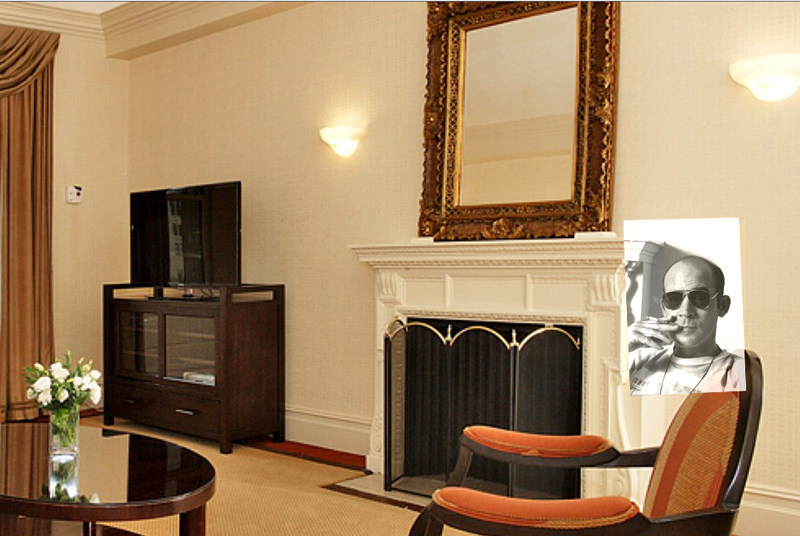
This was another book to use Allen's iconic shot of Hunter on the cover. Hunter Thompson - Outlaw Journalist (Norton) 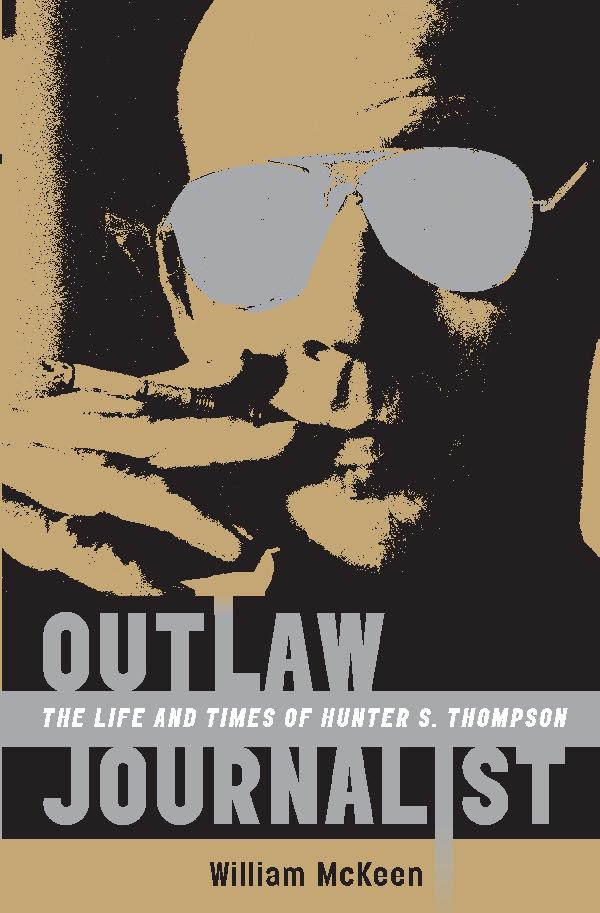
Here's magazine article that used one of Al's pictures for a story on Hunter Thompson. 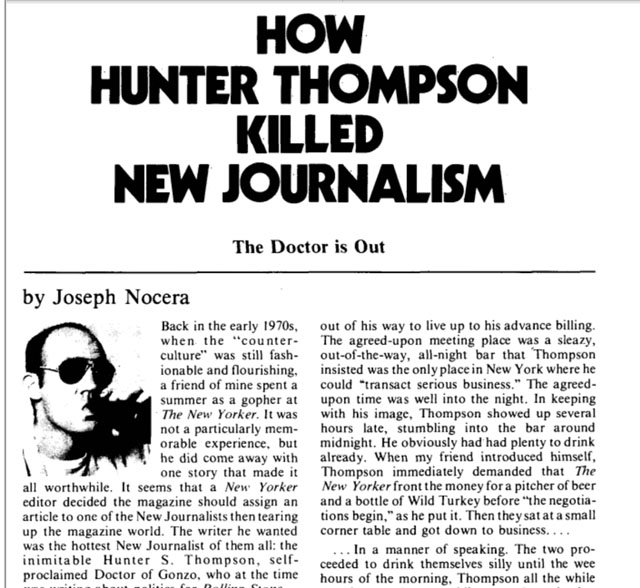
Artist of many stripes have taken Al's photographs and come up with many variations as to its use. Below, are some I have found on the web: (Found on the web.) Quote picture. 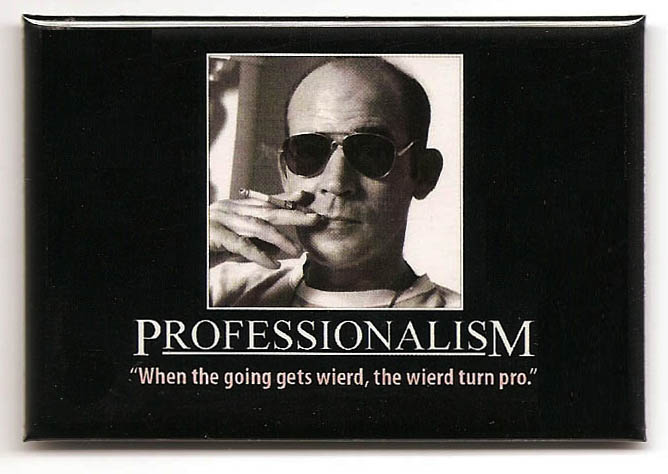
(Found on the web.) Painting. 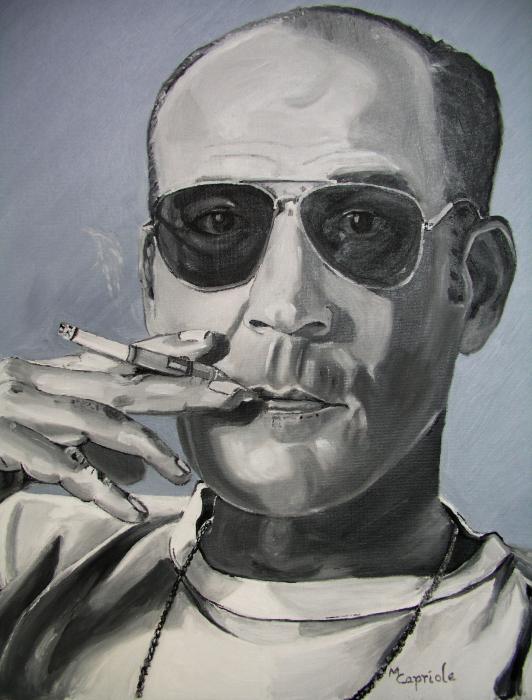
(Found on the web.) Darkened background. 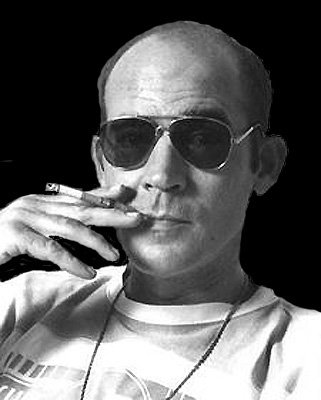
(Found on the web.) Shepard Farley-like. 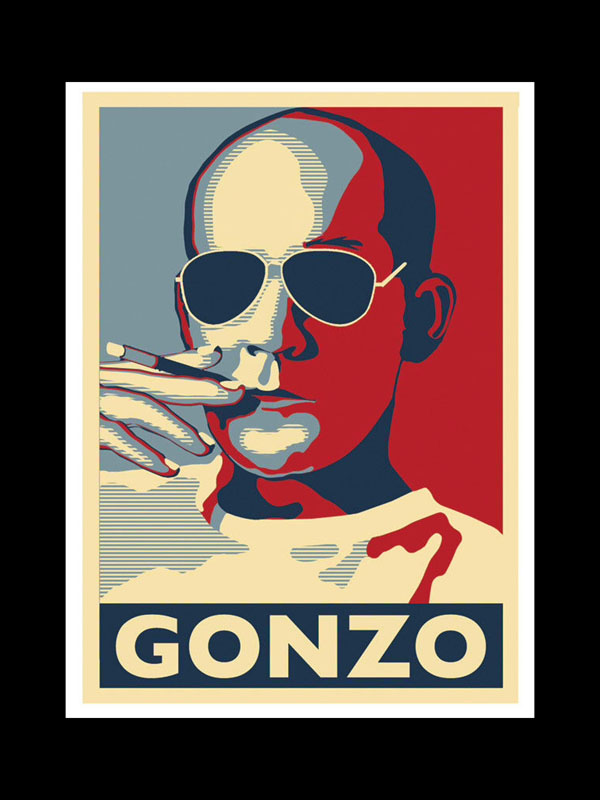
(Found on the web.) Ralph Steadman-like. 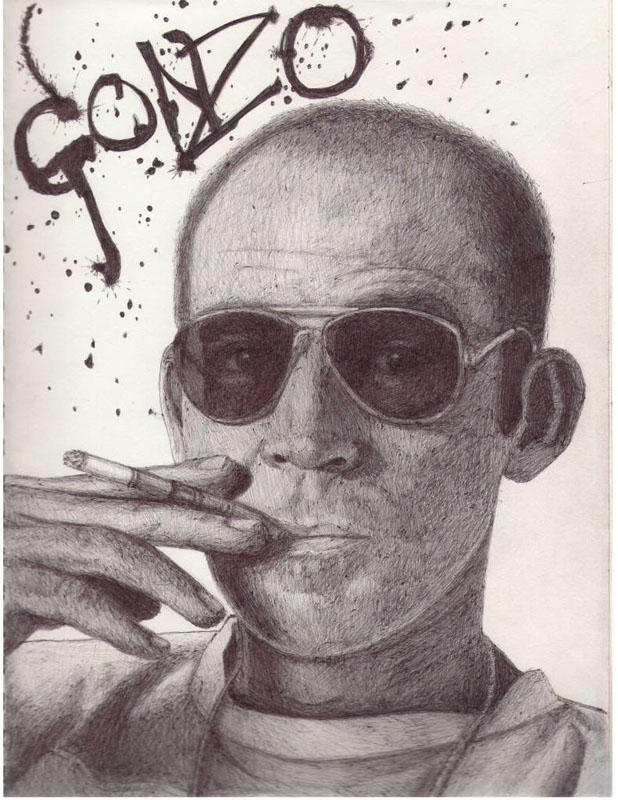
(Found on the web.) Somewhat Warhol-esque. 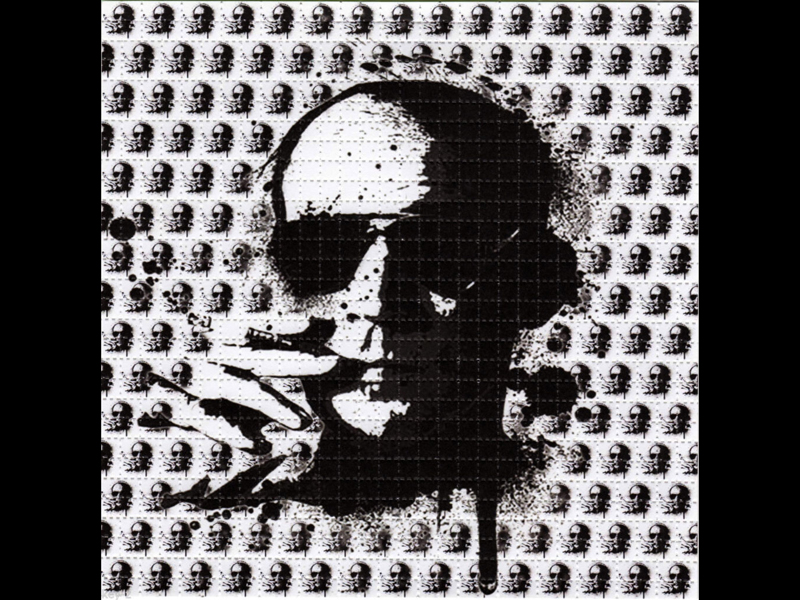
(Found on the web.) Colored textual background. 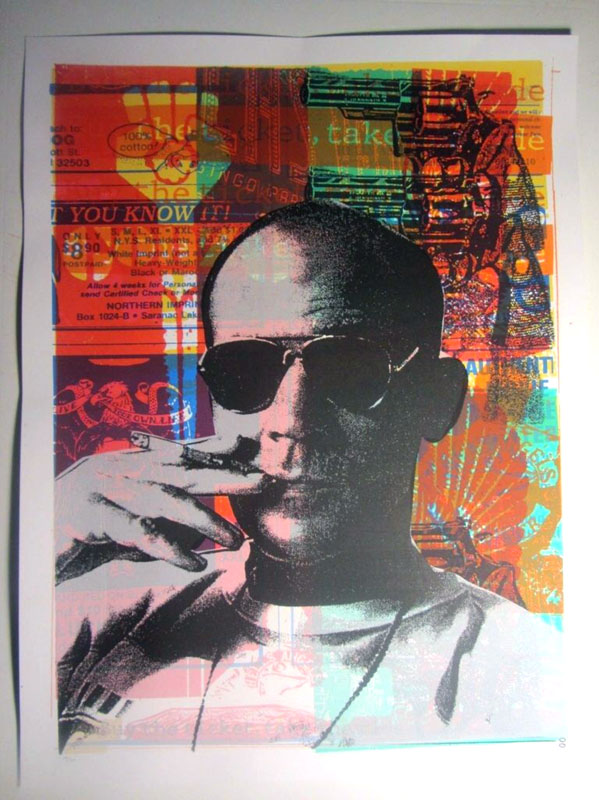
(Found on the web.) A Hunter Thompson fan using it as his chat room picture. 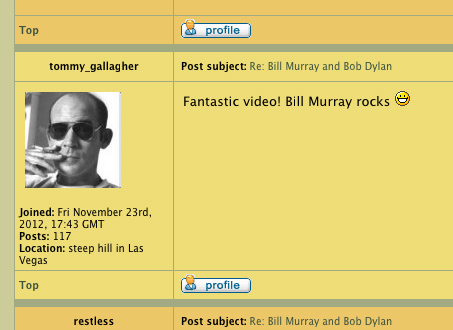
(Found on the web.) Hunter/Old Glory. 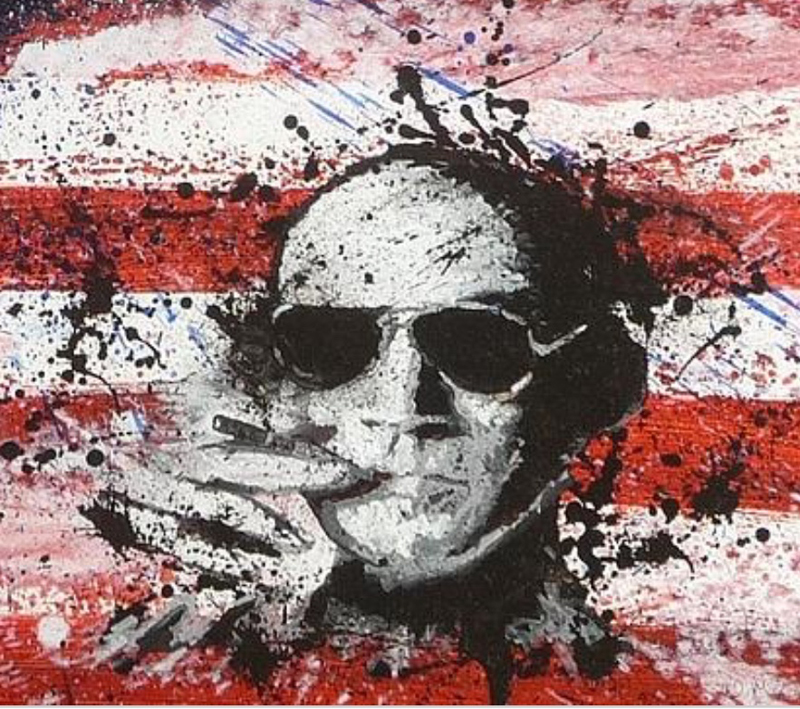
(Found on the web.) Hunter in yellow-blue. 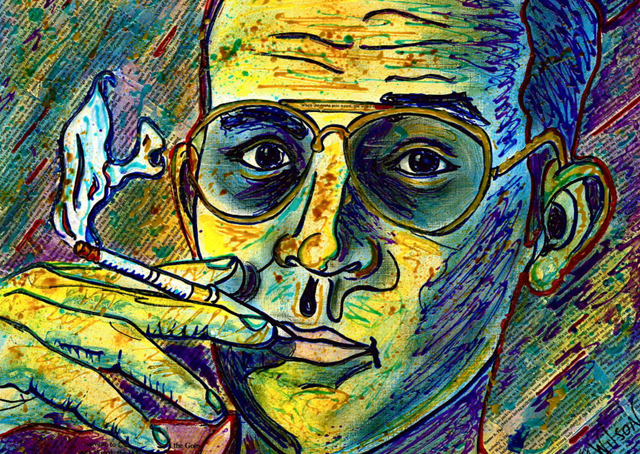
(Found on the web.) A Hunter Thompson aphorism. 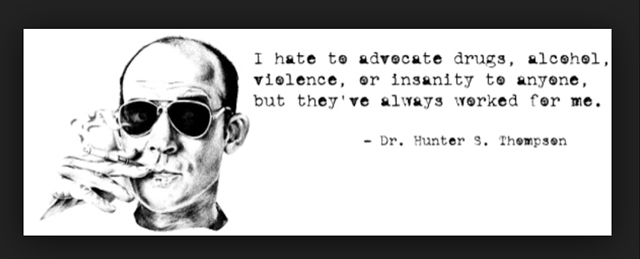
Hunter's magnum opus... "We were somewhere around Barstow, on the edge of the desert, when the drugs began to take hold."....... "There is nothing in the world more helpless and irresponsible and depraved than a man in the depths of an ether binge." 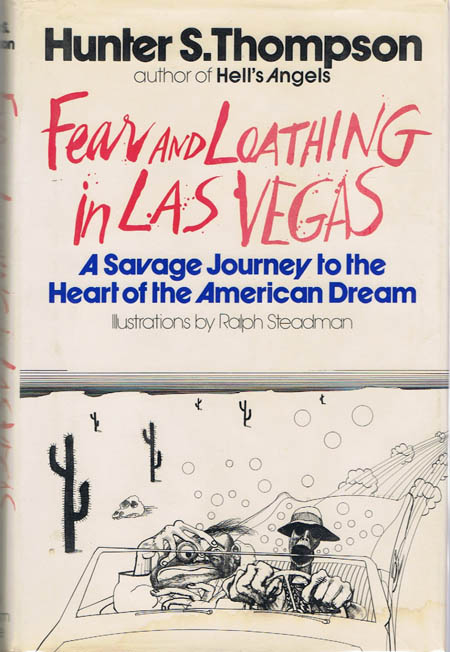
Somewhere around Barstow. 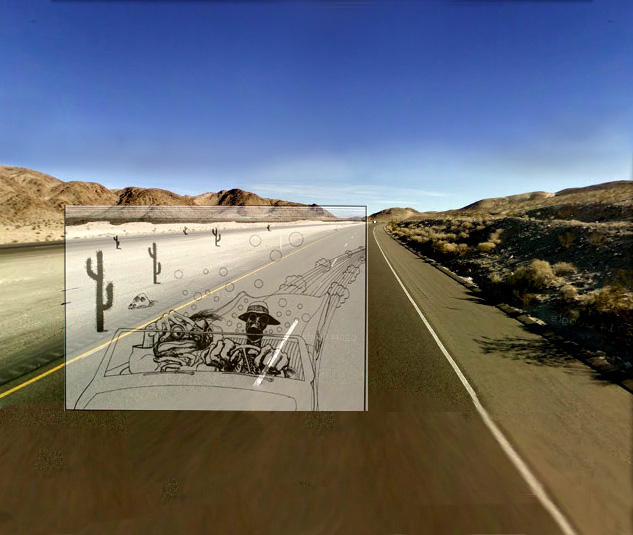
(Insert illustration by Ralph Steadman) 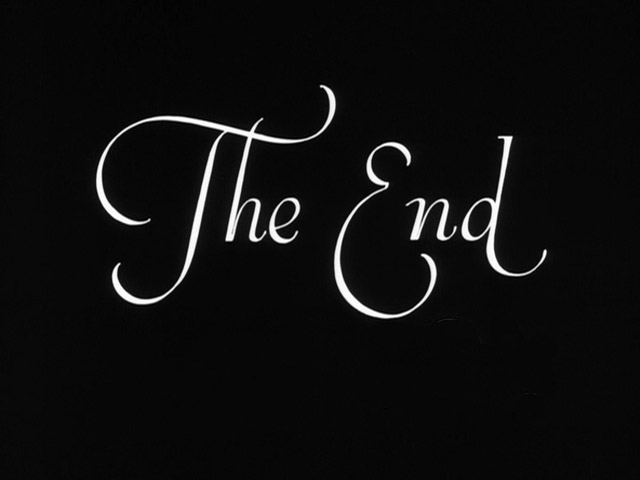
A GALLERY OF SOME OF ALLEN ARPADI'S OTHER PHOTOS World Trade Center (1975). 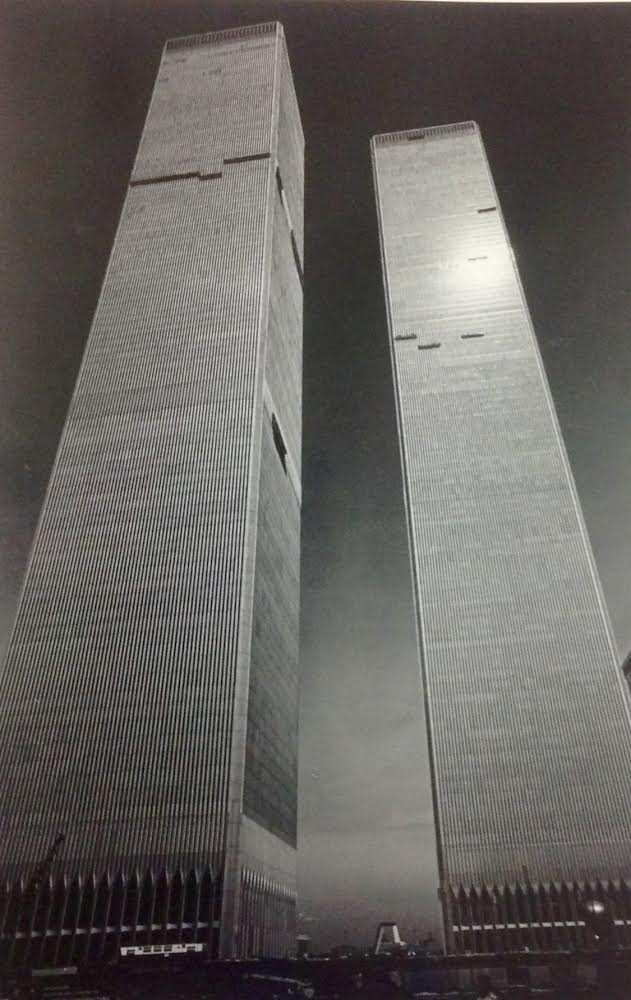
(Copyright 1975 by Allen Arpadi. All Rights Reserved.) André Kertész (1981) (Hungarian-born photographer). 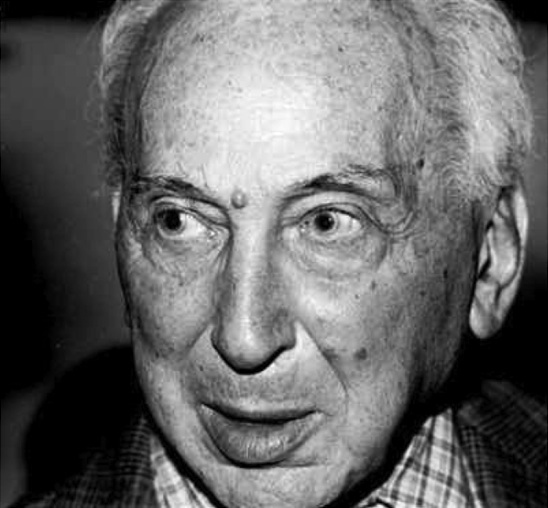
(Copyright 1981 by Allen Arpadi. All Rights Reserved.) I.F. Stone (1982) (investigative journalist and editor of the newsletter I. F. Stone's Weekly) 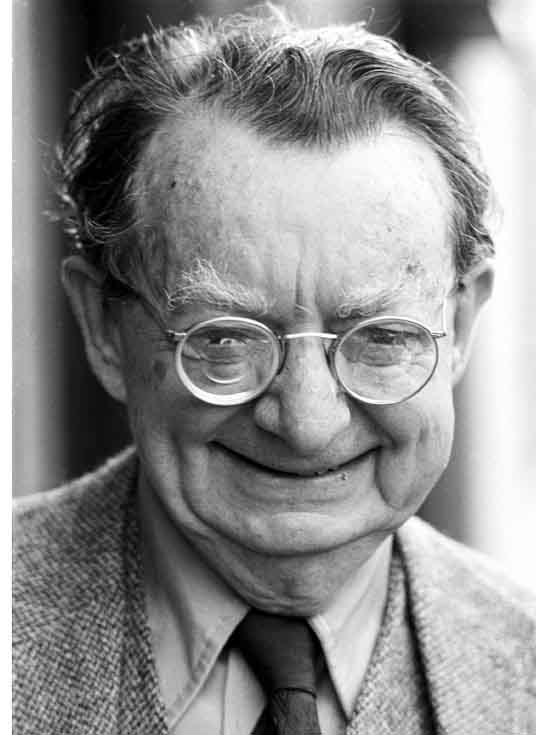
(Copyright 1981 by Allen Arpadi. All Rights Reserved.) |
||

